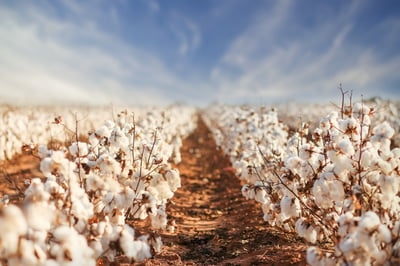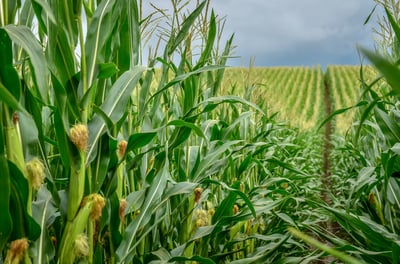Like many other industries, the advancement of technology has changed the game for agriculture, particularly when it comes to water used for irrigation. As the United States continues to take a harder look at water usage and conservation, new technologies have emerged to help growers make their irrigation more efficient.
Irrigated land makes up 20 percent of agricultural acreage in the nation according to the United States Department of Agriculture (USDA.) And that 20 percent of land actually produces 40 percent of the ag output worldwide.
As you can see, water used for irrigation plays a critical role in food security, both in the U.S. and abroad.
However, irrigation also uses approximately 60 percent of the country’s freshwater resources. This leads us to the issue facing many growers today: access to - and a diminished supply of - freshwater that is necessary for clothing and feeding entire populations.
This is why some growers have chosen to invest in technology on their irrigation systems, with a focus on optimizing the efficiency of their water usage. Those embracing modern water control platforms are reaping benefits that may be surprising to those on the fence about upgrading their systems.

The Operational Benefits
1. Optimizing your irrigation system helps our environment
The water we use today is the same water that was on the earth millions of years ago. So we don’t want to waste it, right?
Technological advances, such as irrigation control systems, help reduce the amount of water extracted for plants and the amount lost during the watering process. Users can remotely monitor and control the amount of water dispensed so crops only receive the amount of water needed. This helps reduce loss to surface runoff and evapotranspiration.
Pumping and conveying that water is subsequently reduced, resulting in energy savings, too. Not to mention, remote monitoring allows operators to catch leaks and faulty equipment more quickly. Malfunctioning devices could waste thousands of gallons of water and a good chunk of change before they’re discovered.
2. Boost productivity by saving time on routine maintenance
By utilizing a modern control system, operators can simultaneously monitor and control numerous devices across different farms. Even if they’re miles or even states apart. This implementation makes routine maintenance easier and less time-consuming to complete.

Rather than taking the time to drive from field to field to make sure your system is working properly, you can just take a look at your equipment on your phone while drinking your morning coffee.
This frees up all personnel to focus on more productive tasks.
3. Track data and generate reports
Visibility is one of the most important abilities when it comes to irrigation. Regulations and legislative changes (for example, water usage laws) will also encourage the use of smart irrigation technology and data collection.
Many systems nowadays offer robust data and analytics. This is not only important for reporting that has to be completed for regulatory reasons, but it also helps operators make informed decisions in real-time. That informed decision-making based on crop health can maximize yield potential and crop quality.

4. Increased safety and security
As mentioned before, remote monitoring and control and automation capabilities found in most systems can reduce drive time. Users can receive notifications to alert them if anything goes wrong within the system or something unusual happens. With some systems, you can add cameras for surveillance of your valuable equipment, as well.
SitePro: Your Irrigation System’s Best Friend
The ability to remotely monitor and control (as well as automate) irrigation and fertigation patterns has given farmers and users more confidence in taking care of their crops.
Furthermore, the USDA has conservation programs to provide financial and technical assistance to encourage the adoption of emerging technologies that will help operators be more efficient with their water usage.
SitePro is proud to help small farmers (independent owner/operator, etc.) and large growers (commercial scale, etc.) alike in their efforts to conserve water while optimizing their time and crop yield. Our patented remote control technology gives farmers the ability to see what’s happening at their farms and respond accordingly based on real-time data.
As the United States begins to address water usage and conservation efforts with increased legislation, regulatory reporting will become required (if they aren’t already in your area.) Our historical data collection and built-in templates make regulatory reporting a breeze. 
We know the safety and security of your farms and employees is important to you, so it’s important to us too. Minimize time on the road by viewing and updating your system remotely. Our real-time alerts will notify you if anything unexpected occurs.
Not to mention, SitePro has its own built-in camera surveillance system that can sync up with your automation. Not only will you be able to visualize the state of your equipment, but you’ll be able to physically see your fields in real-time as well.
SitePro puts the power over your resources in your hands, literally. With automated irrigation scheduling, integrated fertigation control, and robust remote capabilities, we've created better management for growers across the country. Optimize your operations and maximize your yield potential, all while saving and preserving our world's most precious and finite resource: water.
The future of farm management and perfect irrigation, every time - we’ve got an app for that.

Resources: